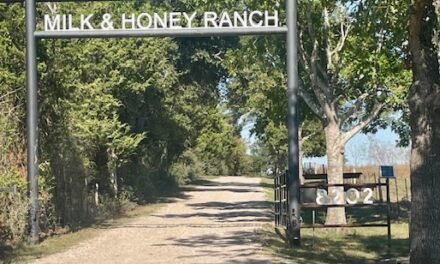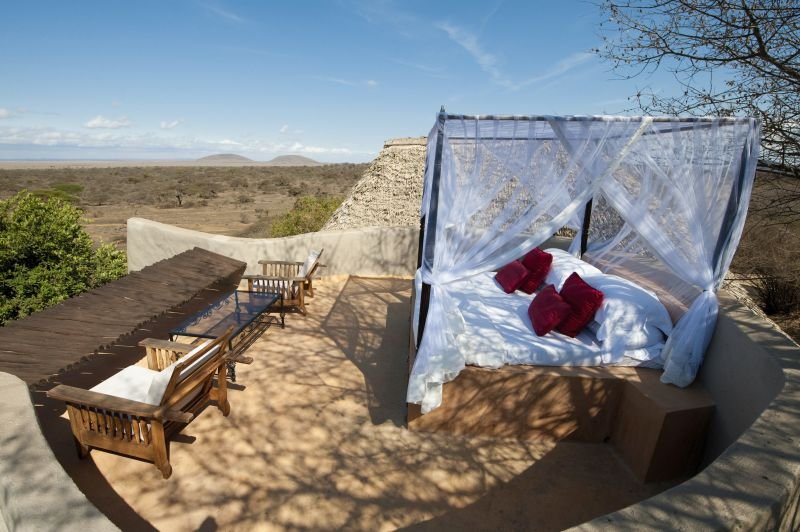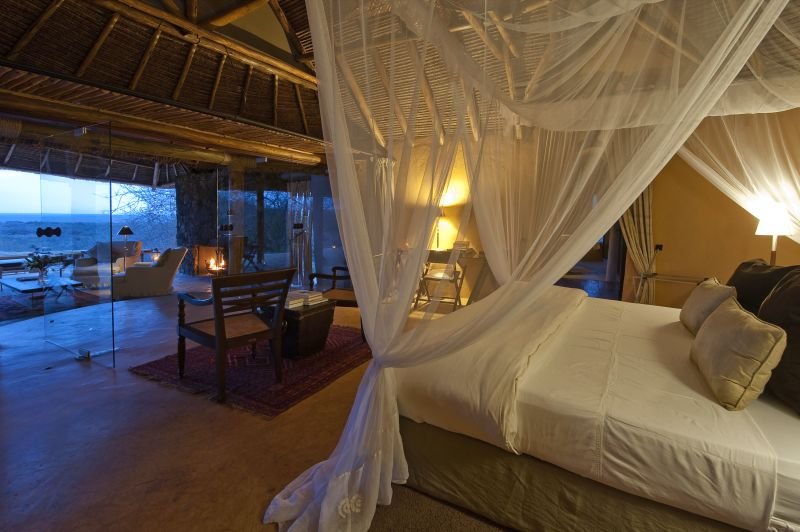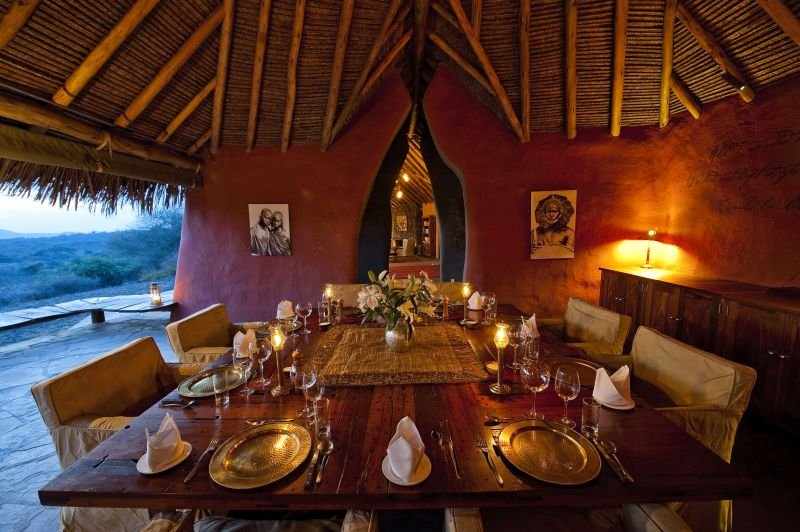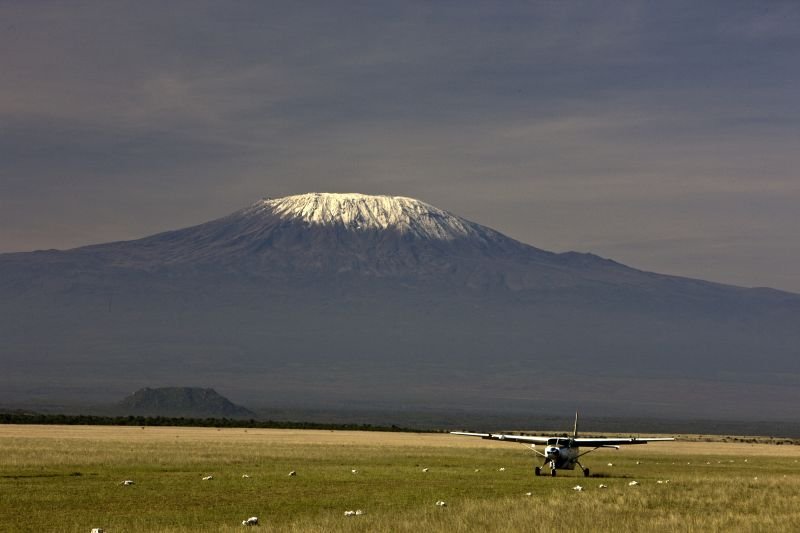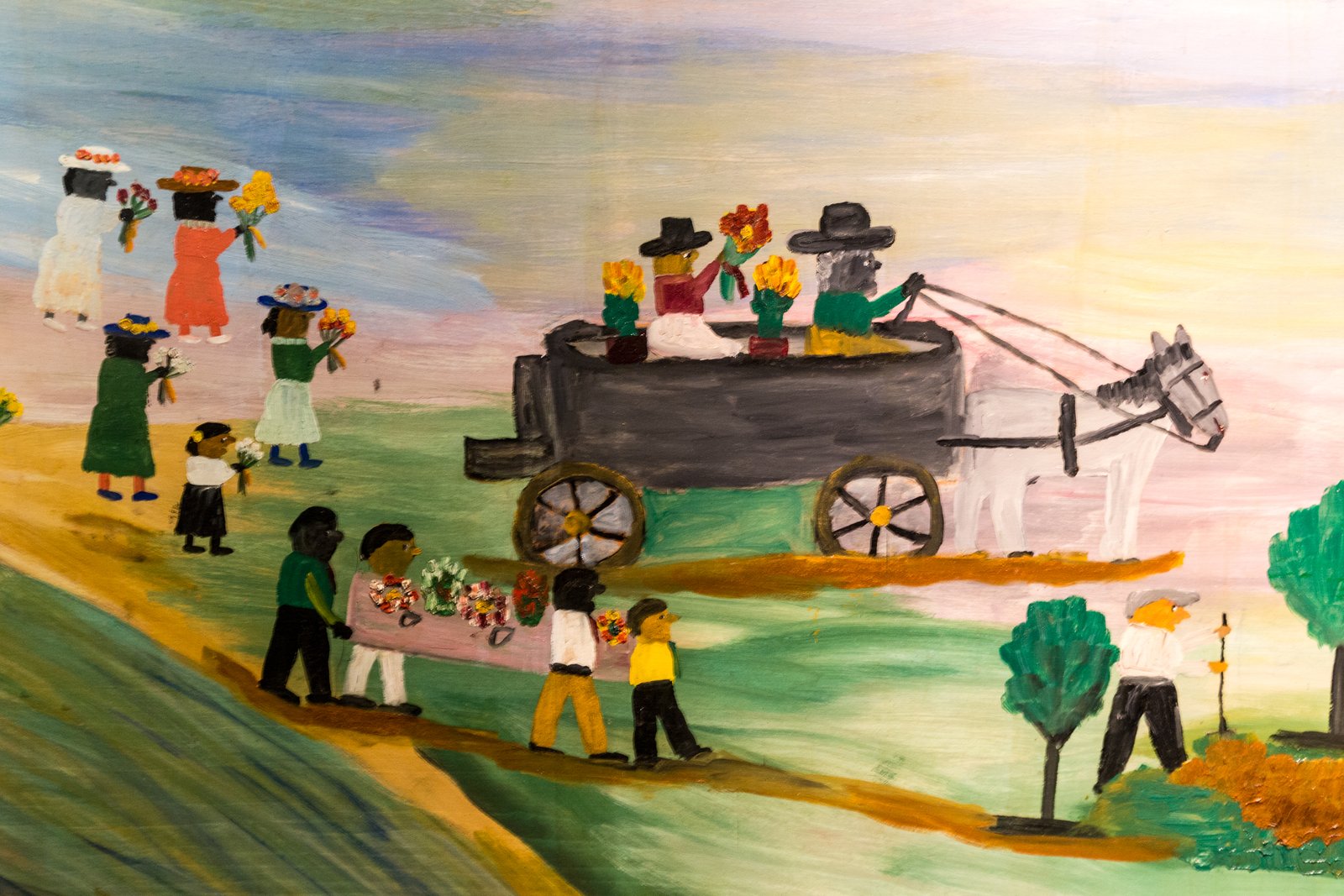
Ol Donyo Lodge: Killing View in Kilimanjaro
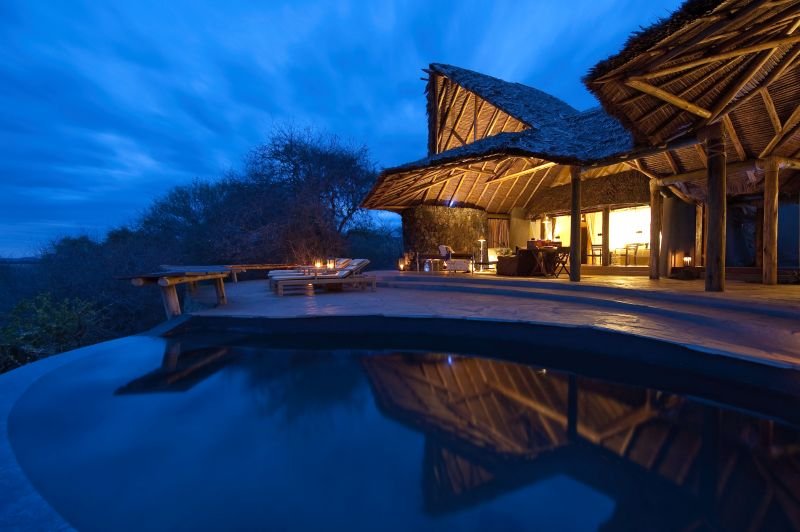
Ol Donyo Lodge: We’re whizzing through the conservation, past a zig-zag of zebra browsing and ostrich tip-toeing hurriedly, flirtatiously wagging tutu-like feathered bottoms. A lone elephant looks very pleased with a tree he has toppled over and Seki, my Masai guide, grins, “Elephant display; they do it to show off to the women. It’s all about the women, you know…”
This entertaining game-drive ends with my arrival at the lodge in the Chyulu Hills that Hemingway poeticised in his writing. Worthy of poetry is the lodge itself. Perched over Savannah grass with astounding views over the snow-capped Kilimanjaro that hangs in the sky like a piece of crystal is this safari lodge. It’s rustic by day, romantic by night, when dressed for supper in candles and lamps and lavish tableware. All this finery doesn’t deter the pet civet cat slinking between your legs as you dine.
Your villa comes with salons flowing unimpeded into terraces with cliff-edge infinity pools offering those bewitching views over Mt Kili, also available from your ample four-poster bed and bath. But sleep under a blanket of stars on the terrace-top star-bed, whose silken-armed embrace you forsake only for champagne breakfasts in the lodge’s fantasy forested treehouse. But not before you feast on the daily spectacle at dawn: as you wake, watch Africa’s loftiest mountain, Mt. Kilimanjaro (apparently “gifted” Queen Victoria), slowly, coyly, extract herself from a duvet of dawn clouds, caress away vestigial wisps -what a tease- that girdle her like white lace lingerie, until she stands before you in all her spectacular nakedness.
Return from a morning safari to breakfast on a pavilion inclined over a waterhole, where animals conduct drinking parties. Lunch can be on varietal outdoors vantage points. Relish falafel and roasted aubergine bestrewn in saffron and pomegranate, as elephants pose gracefully for you- when not throwing their weight around, nudging out giraffe, zebra, gazelle, warthogs and other humbler creatures convened for lunchtime cocktails.
At pre-supper cocktails, a guest teases our American hostess, Alyssa, that some American tourists returned from a game-drive, exultant, “We saw four tigers!”
“It’s the first time an Indian immigrant has been welcome abroad,” I murmur, as some Kenyan-Indian guests with a delicious sense of irony laugh gleefully. Over supper (it’s rather a banquet) on a long table set outside and encircled in lamps, Alyssa says she nicknamed her Masai gun-bearer “Husky,” much to his chagrin. She later realised he thought she was calling him a dog, husky being a dog species. She tried explaining to her employee that “husky” could mean sexy, but wondered how to convey to a Masai what “sexy” means. “Something you feel about a woman who’s not your wife?” I volunteer, as the married women around the table dagger me with Masai-spear looks.
If you’ve lunched overly on chef-manager Richard’s creations and his wife Allyssa’s charm, kill calories on hikes. On my first afternoon, we scale a modest peak with a majestic view. On one side, the setting sun streaks across the sky, a blaze of red velvet, silhouetted against which is a giraffe. Etched for all eternity in my mind, is this first experience of the fabled Kenyan sunset. My gaze shifts and before me rises Mt. Kilimanjaro, whose piercing white contrasts sharply with the racy red sunset. I’m transfixed. But descend we must before dusk descends. Seki offers me a hand. I must be brave. Seki scampers down the slope with the agility and assurance of a mountain goat. I’m in silver sandals, slipping and terrified, but too proud to ask for help. Seki, a true Masai, is proud too. He waits at the bottom of the hill, arms folded, watching, amused. Finally and mercifully, he smiles, “Need help?” This strapping 7-footer runs up the precipice, grabs me by the waist, and dashes down the hill, holding me as if I were a pin.
Once down, he spreads out for sundowners a well-crafted selection of bitings, peppered with titillating conversation. Seki imparts intriguing information on his Masai tribe’s culinary and conjugal conventions. Placidly, he says he drinks blood and loves it. Men take it neat, women and children mix it with milk – it’s the Masai Bloody Mary, he smiles cheekily. He next mentions that Masai men have as many wives as they can afford. Seki has two and seeks more. He’s 50-something. Of course. I ask if his wives would object? “No, it’s the norm.”
“Are his wives too allowed lovers?”
“No!”
“I pursue, if his wife had a lover, would he kill the man?” Seki looks dismayed.
“You don’t kill a man over a wife! The mathematics is simple: you fine him 10 cows.”
“So your wife is worth 10 cows?” I enquire.
“Yes,” Seki replies nonchalantly.
“But what if your mistress had a lover?” I must know.
“Oh, then you kill the man!” Seki declares emphatically, “because, unlike with a wife, with a mistress there’s passion involved!”
I must chuckle and start calculating how a wife, besides serving, cooking, and child-bearing, could prove lucrative. Dispatch your wife on amorous missions, keep earning 10 cows, keep getting richer, keep marrying, keep up the amorous dispatches until you’ve amassed 1000 cows. Indeed, I later learn that some naughty couples do engage in this dubious business. The mathematics of Masai marriage is quite simple!
To learn more go to: www.greatplainsconservation.com.


